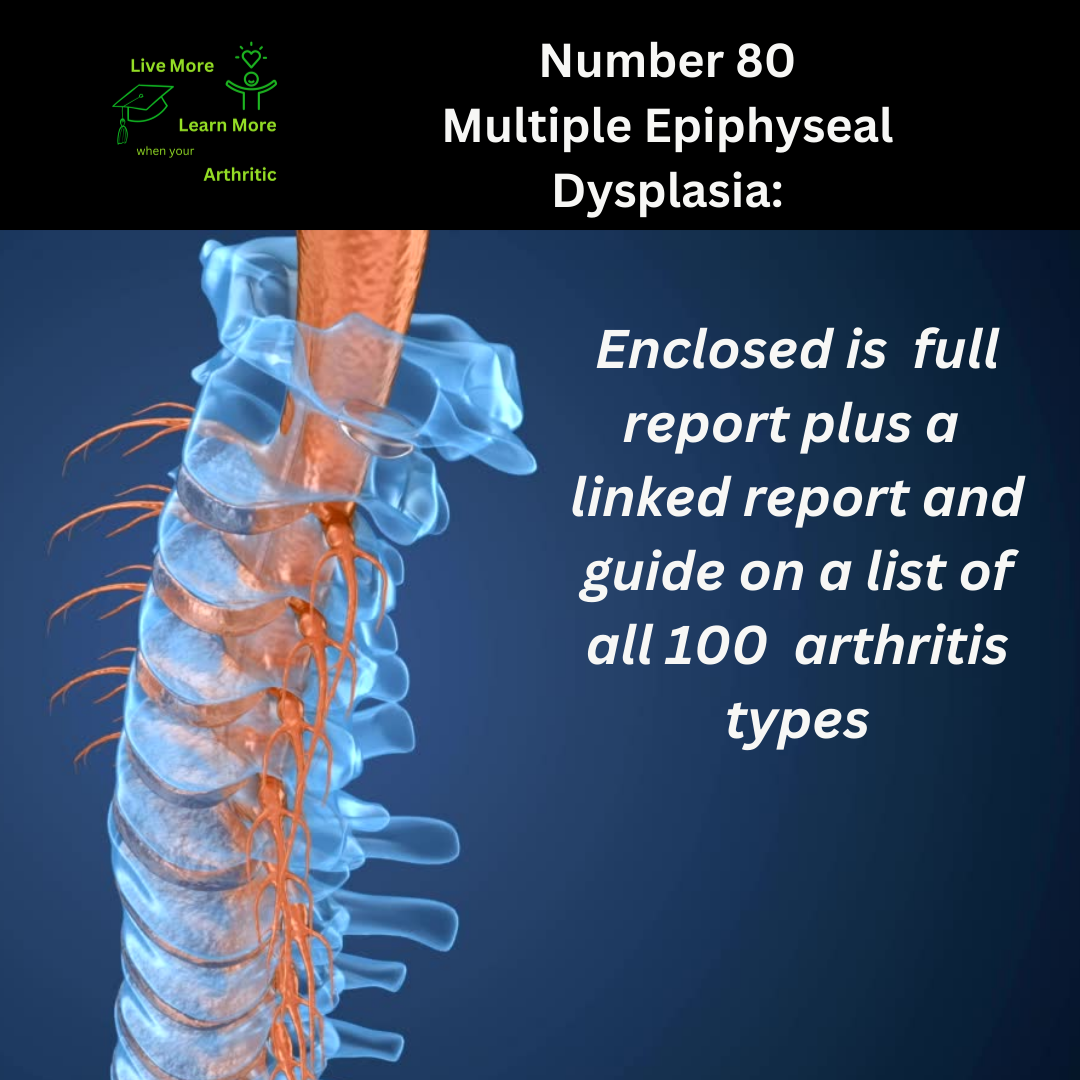
Multiple Epiphyseal Dysplasia: Number 80 on the list of 100 types of Arthritis
Exploring Multiple Epiphyseal Dysplasia: Navigating Challenges with Resilience
Multiple Epiphyseal Dysplasia (MED) is a rare genetic disorder that affects the growth and development of the ends of long bones, known as epiphyses. This condition is characterized by abnormalities in cartilage and bone formation within these growth plates, leading to skeletal abnormalities and joint problems.
MED is a heterogeneous disorder, meaning it can present in various forms and severity levels. Generally, individuals with MED may experience short stature, joint pain, stiffness, and progressive joint deformities. The disease primarily affects the hips, knees, ankles, and hands, impairing mobility and physical function over time.
Causes and Triggers
MED is typically caused by mutations in certain genes involved in the formation and maintenance of cartilage and bone. These genetic alterations disrupt normal skeletal development, leading to the characteristic features of the disorder. While MED is primarily genetic, specific triggers that exacerbate symptoms or disease progression are not well understood.
Symptoms and Impact on Range of Motion
Common symptoms of MED include joint pain, particularly after physical activity, and restricted range of motion due to joint abnormalities. As the disease progresses, individuals may develop osteoarthritis-like changes in affected joints, which can further limit mobility and contribute to discomfort.
Age of Onset and Prognosis
The age of onset for MED can vary widely. Some individuals may show signs of the disorder in early childhood, while others may not experience symptoms until adolescence or adulthood. While MED is a chronic condition, it does not typically shorten lifespan significantly unless severe complications arise.
Autoimmune Nature of MED
MED is not considered an autoimmune disorder. It is primarily a genetic condition characterized by abnormalities in skeletal development, specifically affecting the growth and structure of bones and cartilage.
Improving Quality of Life through Proactive Measures
A proactive approach to managing MED involves a combination of lifestyle modifications and supportive therapies. Physical therapy can help maintain joint flexibility and strength, while assistive devices like orthotics or joint braces may alleviate pressure on affected joints and improve mobility.
Possible Complications of MED
Complications of MED can include progressive joint degeneration, leading to chronic pain and functional impairment. In severe cases, joint deformities may necessitate surgical interventions such as joint replacements to restore function.
Natural Breakthroughs and Health Advantages
Research into natural approaches for MED management is limited. However, maintaining a healthy weight, engaging in low-impact exercises, and incorporating anti-inflammatory foods into the diet may help mitigate symptoms and support overall joint health.
 Demographic Patterns and Gender Distribution
Demographic Patterns and Gender Distribution
MED affects both males and females equally. The prevalence of MED is low, making it a relatively rare condition.
Interconnected Diseases or Conditions
While MED primarily affects the skeletal system, individuals with this disorder may be at increased risk for developing osteoarthritis in affected joints later in life. Close monitoring for joint health and related complications is essential for comprehensive management.
In summary, Multiple Epiphyseal Dysplasia poses unique challenges for individuals affected by this rare genetic disorder. By adopting a proactive approach to symptom management and leveraging supportive therapies, individuals with MED can enhance their quality of life and navigate their journey with resilience and determination.

